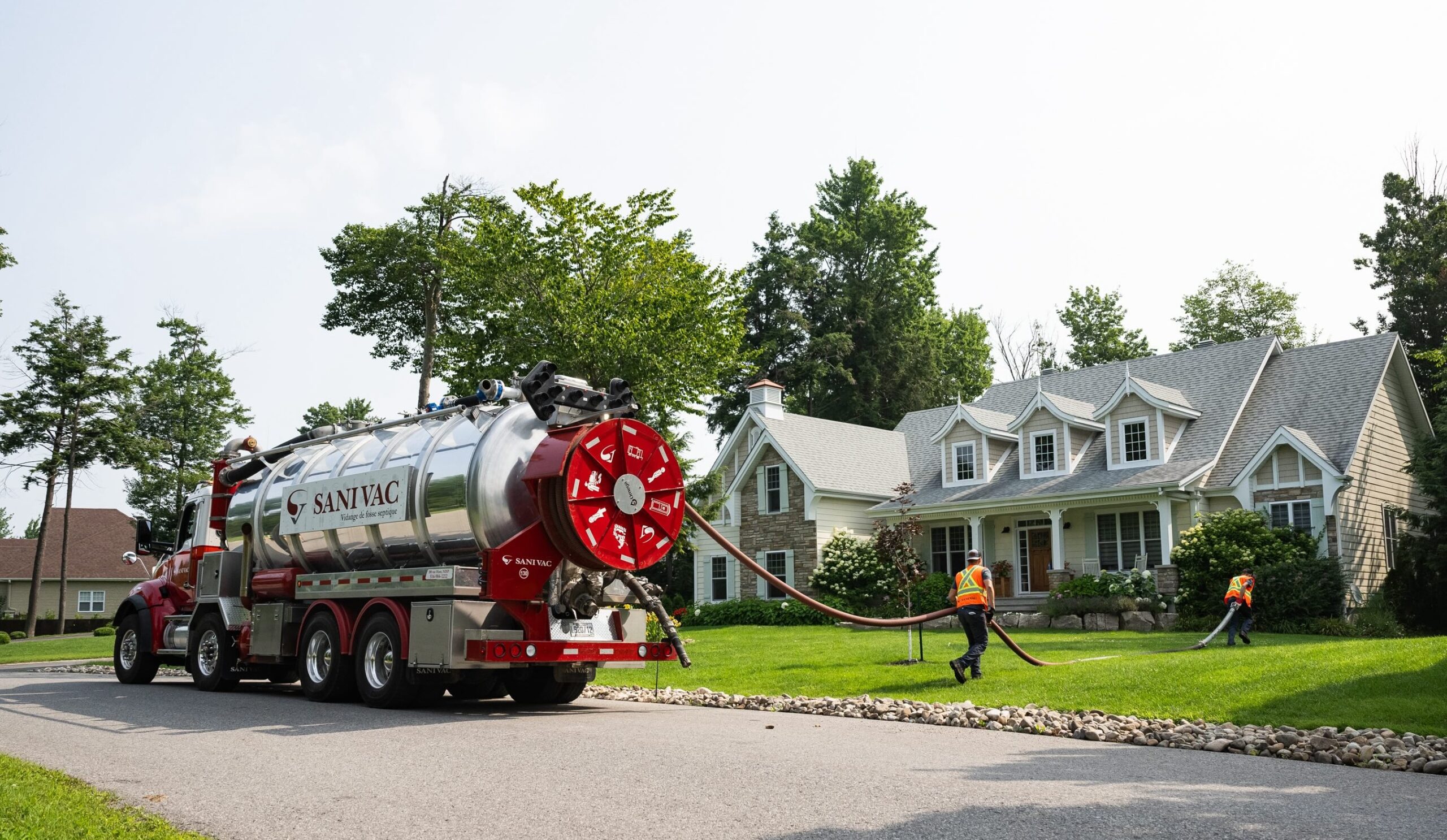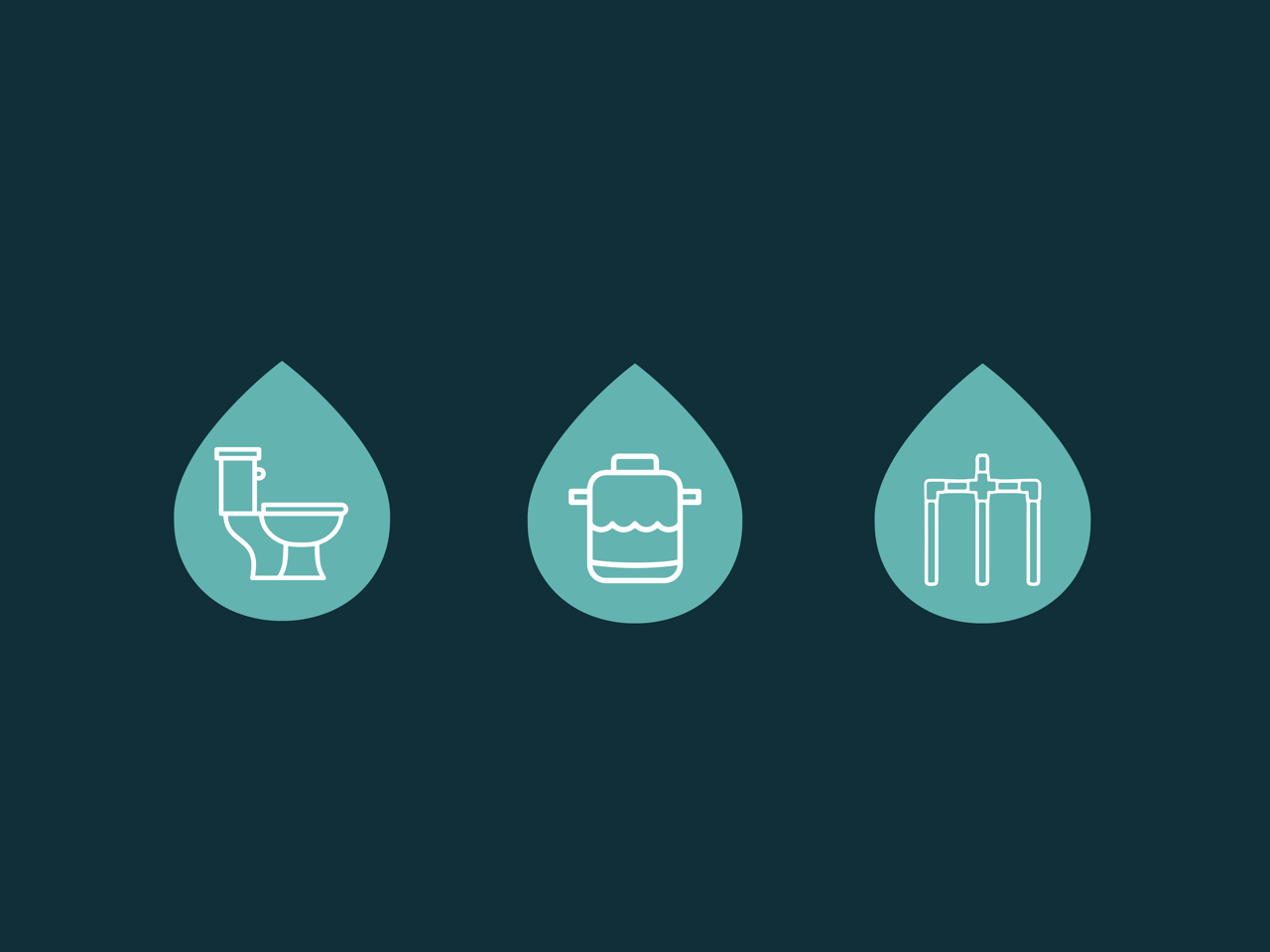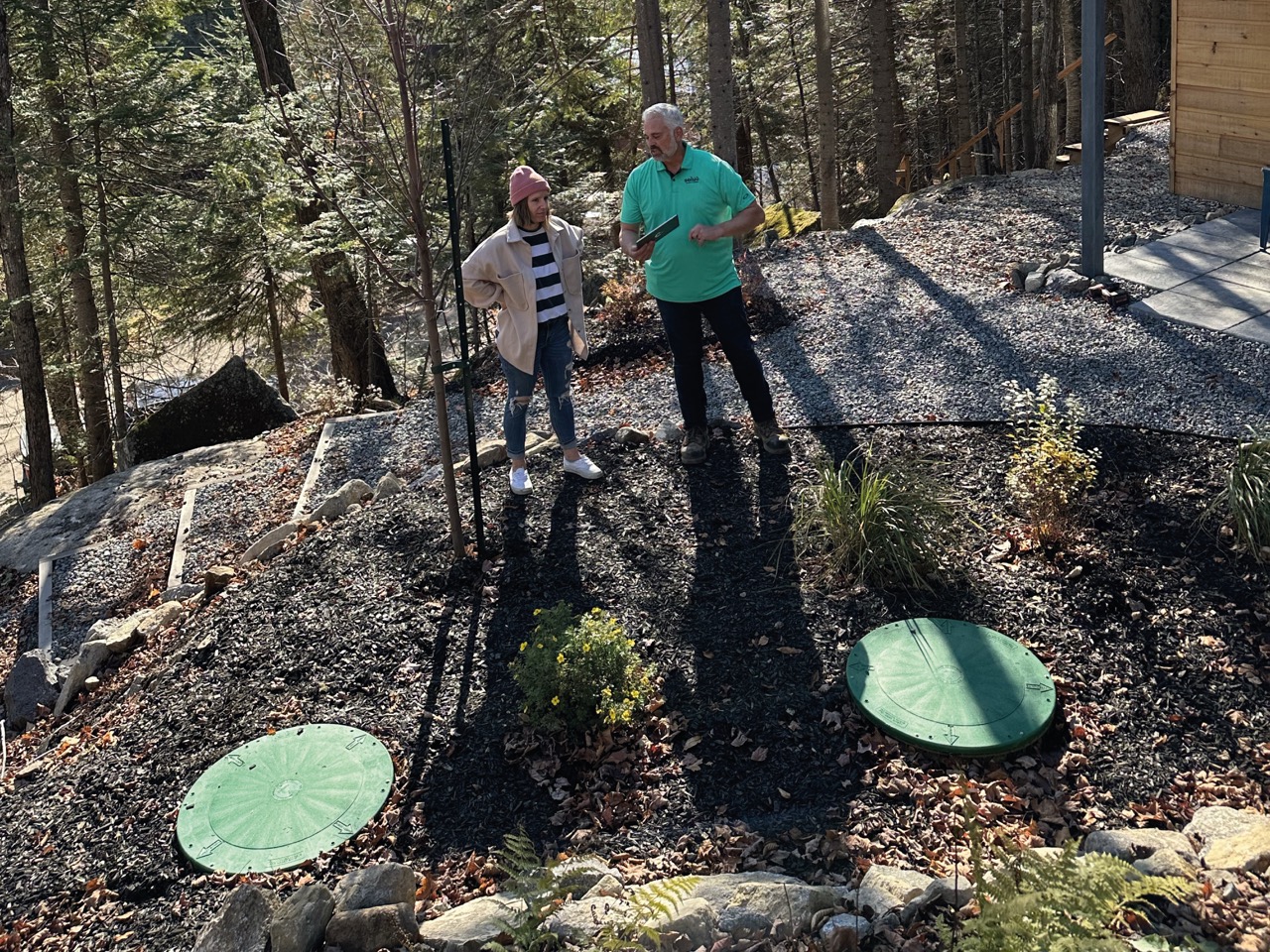Your septic system can last decades, provided you maintain it well and are responsive when you suspect an anomaly. Adequate monitoring not only ensures its proper functioning, but also avoids incidents harmful to the environment. Here’s everything you need to know, from best practices to adopt to symptoms to watch out for.
Maintenance commandments
Concretely, proper maintenance of your installation comes down to a few tips. Taking them seriously can save you from expensive costs in the long run.
1. Understand your septic system
Understanding how your facility operates will help you make wise maintenance decisions. You will detect any signs of problems more quickly.
In summary, a typical septic system consists of three main components: the intake line, the septic tank and the leach field. For some lands, additional treatment technology is placed between the septic tank and the leach field.
Consult our article on the different types of septic installations to better understand which one you have. For any questions, do not hesitate to contact our Soluo experts free of charge.
2. Perform mandatory maintenance
Provincial regulations establish clear parameters for the maintenance of a septic system. In particular, you must ensure that you empty the pit every two years for a primary residence and every four years for a secondary residence. In addition, for additional treatment technologies, you must schedule at least one annual maintenance visit with the manufacturer or a company competent in this matter.
Finally, don’t forget to clean the pre-filter of your septic tank every six months to avoid any risk of blockage.
3. Avoid harmful products
Using harmful chemicals such as harsh cleaners can disrupt the biological balance in your septic tank. These include excessive amounts of phosphate detergents and disinfectants. Beneficial bacteria that break down organic matter can be killed or deactivated by these substances, reducing the efficiency of your system.
Instead, opt for non-toxic and environmentally friendly household products. Additionally, avoid pouring chemicals such as solvents, paints or medications down drains. These can contaminate your septic system.
4. Use water responsibly
Excessive water use can cause the septic system to overload. Limit your consumption by taking simple steps, such as immediately repairing leaking faucets, installing low-flow showerheads, and changing your hygiene habits (showers shorter, washing clothes more spaced apart, faucet turned off when brushing your teeth, etc.).
Spreading water usage throughout the day can also prevent rapid flooding of your septic tank. Otherwise, a snowball effect begins; an intense input then affects the other elements of the installation. The situation can culminate in a clog (blockage of the pipes or soil in your drain field) or a partial or general malfunction.
5. Have your septic system inspected
If in doubt, have your system inspected by an approved professional to detect a problem as soon as possible, before it gets worse. The process aims to check the condition of the septic tank, the drain field and the supply pipe. In the event of an anomaly, the person will tell you the measures to take to correct the situation.
Do you think you need to replace your installation and would like to know what costs to expect? Read our article on the issue.
6. Keep a Record
Keeping a maintenance log is a wise practice for tracing the history of your septic installation. Record the dates of pumping, inspection, maintenance and any repairs performed. Also keep inspection and pumping reports.
This information is useful for planning future maintenance and tracking performance trends for your system. This data could be essential in the event of the sale of your property.
7. Exercise caution in winter
In Quebec, septic systems are sensitive to winter temperatures. To avoid problems such as frozen pipes, make sure the septic tank and inlet and outlet pipes are well insulated. Avoid clearing snow from the ground surfaces where your septic system is located to limit the risk of freezing.
For advice specific to your situation, do not hesitate to contact our Soluo experts.
Ten problematic symptoms
Here are 10 symptoms to watch out for; treating them as soon as possible will restore the proper functioning of the pit. You will avoid unwanted and costly complications.
1. High water level in the septic tank
A high water level in the septic tank is one of the most important indicators of the condition of your system. Too full, it can cause overflows and difficulties in draining wastewater. Monitor the level of the pit regularly to determine if it is time to have it drained. It is normal to always have a high water level in your septic tank, but this should not exceed the levels of the inlet and outlet pipes. As a general rule, a pit should be emptied every two years. Furthermore, your wastewater should never exceed the outlet or inlet pipe of your septic tank.
2. Signs of obstruction
Pay particular attention to signs of obstruction such as slow flow (toilet, sink, shower, bath, etc.), backing up toilets, unpleasant odors or gurgling noises in the pipes. If you notice these symptoms, have your system inspected promptly.
3. Unpleasant odors
Sewer odors can indicate a variety of problems. Smelled inside or outside your home, they can signal a leak, poor seal, inadequate ventilation or obstruction. Don’t ignore suspicious odors and have your system inspected to determine the cause.
4. Water tables saturated
The level of the water table around your septic installation can influence its operation. Too high, it can put pressure on your drainage field and compromise its effectiveness. Monitor the water table during periods of heavy rain or melting snow. If necessary, drainage work could allow for better management of surface water.
5. Visible sewage and smelly puddles
Overflowing your septic tank is a clear sign of trouble. If you notice wastewater flowing onto the surface of your property or foul-smelling accumulations of water, this may indicate an overload of the septic tank, an obstruction or even that the useful life of your septic system has been reached. Act quickly to resolve the problem and avoid environmental damage.
6. Damaged or clogged pipes and vents
The pipes and vents of your septic system should be clear and free of debris. Make sure nothing is built or planted on top of these items, as this can interfere with their operation. Keep an eye on pipes and vents to make sure they are in good condition.
7. Invasive vegetation
Vegetation near your septic system can affect its operation. Roots from trees and shrubs can infiltrate pipes and system components, causing blockages and leaks. Avoid planting trees near your pit and monitor the growth of existing vegetation.
8. Alarms
Many septic systems are equipped with alarm systems. If you have such a security device, make sure it is working properly and respond immediately to any alerts. Its triggering can indicate an overloaded septic tank, a high water table or other serious problems.
9. Signs of leaks
Leaks in your septic system can be difficult to detect, but they can cause significant damage. Watch for signs, such as wet areas, unusually green or soggy vegetation around the drain field. If in doubt, have your system inspected by a professional.
10. Recurring symptoms
In addition to helping you track the maintenance of your system, keeping a log can help detect problematic trends that need to be addressed.
In conclusion
Regular monitoring of your septic system can prevent a problem from getting worse and thus extend its lifespan. The longevity of your system remains closely linked to the maintenance you perform on it. Compliance with professional recommendations will ensure its proper functioning. In the longer term, this adequate care will help protect your investment, but also the environment.

About the Author
Étienne Gaudette
Chief Executive Officer (CEO)
Étienne Gaudette is the president of the Soluo Group, a company specializing in inspection, design and residential septic installation work serving the majority of regions of Quebec for more than 30 years. Thanks to his creative mind and his background in marketing consulting and as director of the group of experts in decentralized water management at Réseau Environnement, Étienne brings a unique vision to the on-site sanitation industry in Quebec in order to bring together the all industry players for the benefit of Quebecker. One goal: Change the world, one septic installation at a time.
You liked this post?
Share
More tips and advice here
Waste that accumulates in a septic tank must be removed regularly to allow the system to continue operating efficiently. The process, which is also […]
Has your septic system reached the end of its useful life? Do you want to build on land not serviced by a municipal sewer […]


